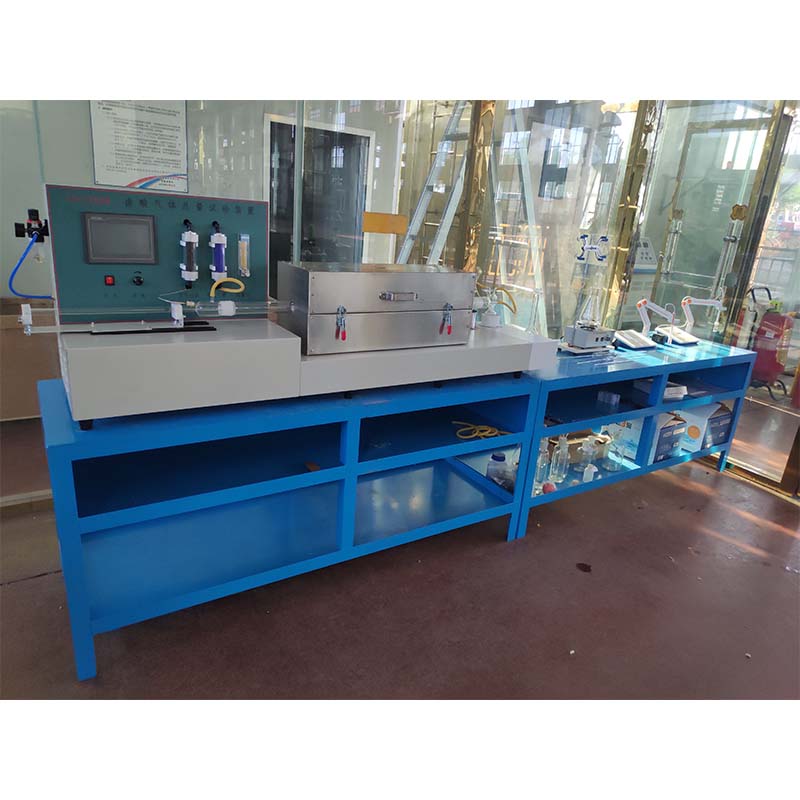Ultraviolet Radiation Equipment for Crosslinking Polyolefins and Enhancing Material Properties
Ultraviolet Irradiation Polyolefin Crosslinking Equipment An Overview
In the ever-evolving world of polymer science, crosslinking is an essential process that significantly enhances the properties of polyolefins. This is particularly important for a range of applications including insulation materials, automotive parts, and various industrial components. Among the various methods of crosslinking, ultraviolet (UV) irradiation has emerged as a highly effective and efficient technique, giving rise to specialized equipment designed for this purpose. This article explores the workings, advantages, and applications of UV irradiation polyolefin crosslinking equipment.
Understanding Polyolefins and Crosslinking
Polyolefins, such as polyethylene (PE) and polypropylene (PP), are versatile thermoplastics widely used in various industries due to their excellent chemical resistance, mechanical properties, and cost-effectiveness. However, unmodified polyolefins may exhibit limitations in thermal stability, tensile strength, and elasticity. Crosslinking involves forming chemical bonds between polymer chains, transforming them into a three-dimensional network that significantly improves these properties.
Traditional methods of crosslinking polyolefins include chemical crosslinking agents or radiation crosslinking using gamma rays or electron beams. However, UV irradiation has gained prominence due to its relatively lower energy requirements and the ability to be precisely controlled, making it an attractive option for manufacturers.
UV Irradiation Equipment How It Works
UV irradiation polyolefin crosslinking equipment typically consists of several key components UV lamps, a conveyor system, and a nitrogen purging system. The process begins by feeding polyolefin materials, often in the form of films or molded parts, into the equipment. As these materials pass under the UV lamps, the UV radiation initiates a photochemical reaction that generates free radicals within the polymer matrix.
These free radicals react with the polymer chains, forming crosslinked structures that enhance the material's properties. The duration and intensity of UV exposure can be adjusted to control the degree of crosslinking, allowing for customization based on the specific requirements of the application.
One significant advantage of UV crosslinking is its rapid processing capability. Unlike thermal crosslinking methods, which may take extended periods, UV irradiation achieves crosslinking within seconds to minutes. This efficiency not only reduces production time but also enhances overall productivity.
Advantages of UV Irradiation Crosslinking
ultraviolet irradiation polyolefin crosslinking equipment

1. Energy Efficiency UV irradiation requires considerably less energy compared to conventional thermal or chemical crosslinking methods. This translates to lower operating costs and a reduced environmental footprint for manufacturing processes.
2. Speed As mentioned, the rapid crosslinking achieved through UV exposure allows manufacturers to produce goods faster. This is particularly beneficial in high-volume production scenarios where time is a critical factor.
3. Quality Control The ability to precisely control the UV exposure parameters enables manufacturers to tailor the crosslinking process to meet specific performance criteria. This leads to improved consistency and quality in the final products.
4. Improved Properties Crosslinked polyolefins exhibit enhanced properties such as increased tensile strength, improved heat resistance, and greater chemical stability, broadening the scope of applications for these materials.
5. Reduced Use of Additives UV crosslinking can often reduce or eliminate the need for chemical crosslinking agents, resulting in less environmental contamination and safer working conditions.
Applications of UV Crosslinked Polyolefins
The versatility and improved properties of UV crosslinked polyolefins make them suitable for a wide range of applications. In the electrical and electronics sectors, these materials are used for cable insulation and jacketing, ensuring durability and resistance to environmental degradation. In the automotive industry, UV crosslinked films are employed for protective coatings and trim components, enhancing vehicle aesthetics and longevity.
Additionally, the packaging industry benefits from UV crosslinking technology, particularly for films that require improved barrier properties and mechanical strength. Medical devices and components also utilize UV crosslinked polyolefins, where sterility and biocompatibility are paramount.
Conclusion
In conclusion, UV irradiation polyolefin crosslinking equipment represents a significant advancement in the polymer processing industry. The ability to efficiently enhance the properties of polyolefins through controlled UV exposure has opened new avenues for innovation across various sectors. As technology continues to evolve, the integration of UV crosslinking processes is expected to expand, driving demand for high-performance polyolefin products and setting new standards for material durability and functionality. The future of polyolefin applications looks promising, underpinned by the remarkable capabilities of UV irradiation technology.
-
Why the Conductor Resistance Constant Temperature Measurement Machine Redefines Precision
NewsJun.20,2025
-
Reliable Testing Starts Here: Why the High Insulation Resistance Measuring Instrument Is a Must-Have
NewsJun.20,2025
-
Flexible Cable Flexing Test Equipment: The Precision Standard for Cable Durability and Performance Testing
NewsJun.20,2025
-
Digital Measurement Projector: Precision Visualization for Modern Manufacturing
NewsJun.20,2025
-
Computer Control Electronic Tensile Tester: Precision and Power for the Modern Metal Industry
NewsJun.20,2025
-
Cable Spark Tester: Your Ultimate Insulation Assurance for Wire and Cable Testing
NewsJun.20,2025
 Copyright © 2025 Hebei Fangyuan Instrument & Equipment Co.,Ltd. All Rights Reserved. Sitemap | Privacy Policy
Copyright © 2025 Hebei Fangyuan Instrument & Equipment Co.,Ltd. All Rights Reserved. Sitemap | Privacy Policy
